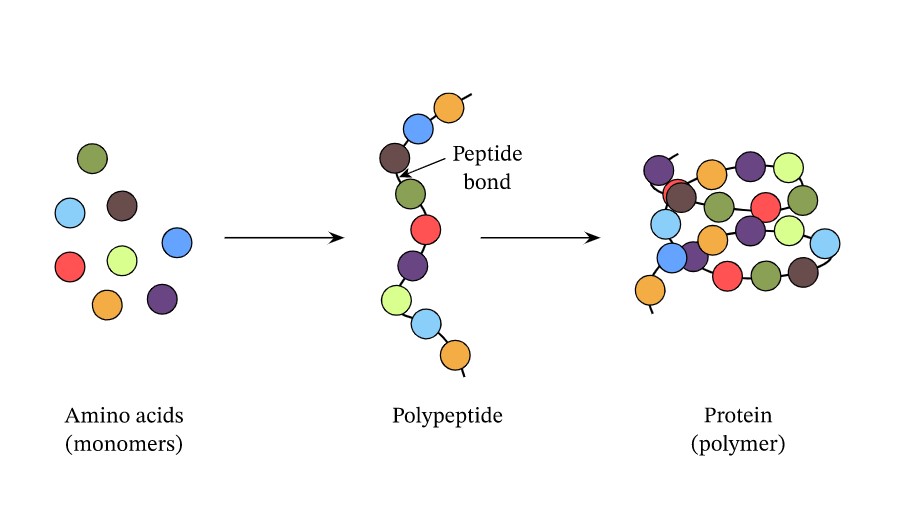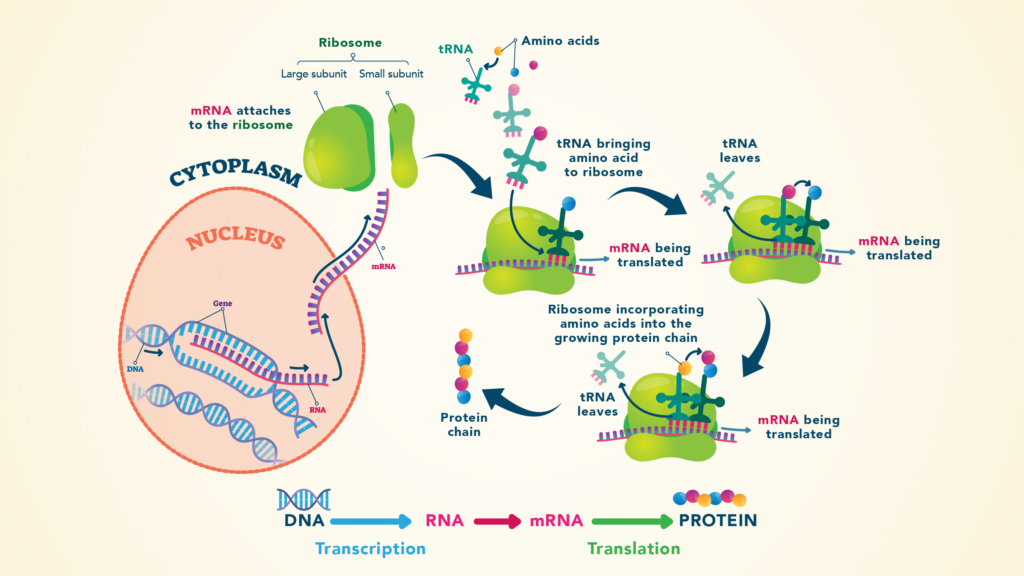Amino Acids – All you Need to Know
We’d love to talk about amino acids! You can think of them like the letters of the alphabet. When you combine letters in various ways, you make different words. The same goes for amino acids — when you combine them in various ways, you make different proteins.
The Basics of Amino Acids
Proteins that you consume (like eggs, chicken… etc.) are digested and broken down to form amino acids. Amino acids, or monomers, then form polypeptides, which are attached by a peptide bond. Peptide bonds are made up of an a-nitrogen atom of one acid and the carbonyl carbon of another. These polypeptides form polymers, or proteins that are used around the body.
Amino Acid Groupings
There are 4 ways we can classify these tiny monomers. These include complete proteins as well as essential, non-essential and conditional amino acids. Complete proteins are something you hear a lot about these days. These are simply proteins that contain all the amino acids your body needs. You need 20 kinds of amino acids to combine into the different proteins your body uses. Out of the hundreds of proteins our bodies make out of these 20 amino acids, there are only 9 we can’t make ourselves. Therefore, these 9 can only be sourced from the food we eat. This specific group of nine are called the “essential amino acids”.
Complete list from the Cleveland Clinic:
Histidine
Histidine helps make a brain chemical (neurotransmitter) called histamine. Histamine plays an important role in your body’s immune function, digestion, sleep and sexual function.
Isoleucine
Isoleucine is involved with your body’s muscle metabolism and immune function. It also helps your body make hemoglobin and regulate energy.
Leucine
Leucine helps your body make protein and growth hormones. It also helps grow and repair muscle tissue, heal wounds and regulate blood sugar levels.
Lysine
Lysine is involved in the production of hormones and energy. It’s also important for calcium and immune function.
Methionine
Methionine helps with your body’s tissue growth, metabolism and detoxification. Furthermore, this amino acid also helps with the absorption of essential minerals, including zinc and selenium.
Phenylalanine
Phenylalanine is needed for the production of your brain’s chemical messengers, including dopamine, epinephrine and norepinephrine. It’s also important for the production of other amino acids.
Threonine
Threonine plays an important role in collagen and elastin. These proteins provide structure to your skin and connective tissue. They also help with forming blood clots, which help prevent bleeding. Threonine plays an important role in fat metabolism and your immune function, too.
Tryptophan
Tryptophan helps maintain your body’s correct nitrogen balance. It also helps make a brain chemical (neurotransmitter) called serotonin. Serotonin regulates your mood, appetite and sleep.
Valine
Valine helps with muscle growth, tissue regeneration and making energy.
Now, we’ve talked about the group of essentials and complete proteins. But what are the non-essential and conditional ones? Non-essential amino acids are what our bodies can produce, without already being in our food. These inlcude; alanine, arginine, asparagine, aspartic acid, cysteine, glutamic acid, glutamine, glycine, proline, serine, and tyrosine. Conditional are the ones that are usually not essential, except when we are ill or stressed. These inlcude arginine, cysteine, glutamine, tyrosine, glycine, ornithine, proline, and serine.
Left and Right Free Forms
“Free form” means the acid is already in what would be a digested form, they are monomers already. This means your body doesn’t have to work to break them down, they are ready for use as consumed. There are suppliment like these sold all over health markets today.
All amino acids (except glycine) are reffered to as stereoisomers. This means they are the mirror image of their structure. The two mirror images are referedd to as D- (right) and L- (left) amino acids to help differentiate. Suppliments on the market today are mostly left free form. These are what make up all proteins in our bodies. L-glutamine is one that claims to help heal the gut, colon, and the track between.
L-lysine might help retard the herpes virus. But do these suppliments really work? Some sources claim they do, while others are skeptical.
Here’s the Seaweed Facts
If you follow our blogs, you can always find a trend. Seaweed is the best! And we want to inform you on exactly how in every way we can. Did you know that Rhodophyta, the red seaweeds, contain the highest amount of bioavailable protein? This means that you don’t even have to eat them in order to gain the internal benefits of all the proteins they contain. After reading this blog, you can probably do the math on where we’re going with this… Proteins break into polypeptides. Polypeptides break into amino acids. Then, amino acids are made into new proteins! Except, you don’t have to actually EAT the proteins when you use whole, natural seaweed skincare. Check out our blog on the 7 Ways Seaweed Helps in Skin Repair to understand how.
Looking for one of our protein rich products? You can search “Rhodophyta” on our website, or check out our Sea Foam Cleansing Concentrate and Eye Contour Gel which have some of the highest protein content of any of our products!




